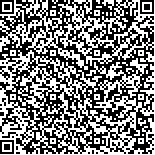本文已被:浏览 442次 下载 255次
投稿时间:2021-05-07 网络发布日期:2022-01-20
投稿时间:2021-05-07 网络发布日期:2022-01-20
中文摘要: 目的 探讨穴位压痛反应对儿童过敏性紫癜是否存在肾脏损害的诊断价值。
方法 将2019年10月至2021年4月山东中医药大学附属医院儿科病房129例过敏性紫癜患儿纳入本研究,其中伴有肾损害的64例患儿为观察组,其余65例未发生肾损害的患儿作为对照组。对所有患儿的太溪、三阴交、足三里、血海的按压疼痛进行(VAS)数字疼痛评分以及压痛阈值评估,检测观察组患儿尿蛋白消失时间及24 h尿蛋白,并分析穴位压痛反应与尿蛋白消失时间及24 h尿蛋白的相关性。
结果 观察组患儿穴位压痛VAS评分均明显高于对照组的患儿(P<0.01,P<0.05)。观察组患儿穴位压痛阈值均低于对照组患儿(P<0.01,P<0.05);尿蛋白消失时间与4个穴位的压痛VAS评分及压痛阈值均不相关(P>0.05);观察组患儿太溪穴压痛VAS评分与24 h尿蛋白定量呈正相关(P<0.05),与余穴位不相关(P>0.05);观察组患儿太溪穴压痛阈值与24 h尿蛋白呈负相关(P<0.05),与余穴位不相关(P>0.05)。
结论 太溪、三阴交、足三里、血海穴压痛程度可能能够反映过敏性紫癜患儿是否存在肾脏损害,太溪穴可同时反映肾脏损伤的程度,但4个穴位均不能预测本次病程时间的长短。
Abstract:ObjectiveTo explore the value of acupoint tenderness response in the diagnosis of renal damage in children with Henoch Schonlein purpura (HSP).
Methods A total of 129 children with HSP treated in the Affiliated Hospital of Shandong University of TCM from October 2019 to April 2021 were selected and divided into observation group (with renal damage, n=64) and control group(without renal damage,n=65). The acupoint tenderness responses of Taixi, Sanyinjiao, Zusanli and Xuehai were evaluated with visual analog scale (VAS) and pressure pain threshold (PPT) in all children. The 24 h urinary protein content and the time for urinary protein disappearance were measured in observation group, and the associations of acupoints tenderness respone with the time of urinary protein disappearance and 24 h urinary protein were analyzed.
Results In observation group, VAS scores were significantly higher than those in control group (P<0.01,P<0.05), and PPTs were lower than those in control group (P<0.01,P<0.05). There were no correlations between the time for urinary protein disappearance and the VAS score and PPTs at the four acupoints (P>0.05). In observation group, VAS score of tenderness at Taixi acupoint was positively correlated with the 24 hour urinary protein content (P<0.05), and also PPT at Taixi acupoint was negatively correlated with 24 hour urine protein content(P<0.05),
but the VAS score of tenderness and PPT at other acpoints were not correlated with 24 h urinary protein content(P>0.05).
Conclusions The tenderness response of Taixi, Sanyinjiao, Zusanli and Xuehai points may reflect whether there is renal damage in children with HSP, and tenderness at Taixi acupoint can reflect the degree of renal damage at the same time. However, the four acupoints could not predict the duration of the disease.
keywords: Henoch-Schonlein purpura Henoch-Schnlein purpura nephritis Tenderness response Acupoint specificity
文章编号: 中图分类号:R272.6 文献标志码:B
基金项目:山东省中医药科技发展计划项目(2019-0972)
| 作者 | 单位 |
| 李兆睿1 | 山东中医药大学第一临床医学院,山东 济南 250014 |
| 孙冬冬1 | 山东中医药大学第一临床医学院,山东 济南 250014 |
| 郭彤彤1 | 山东中医药大学第一临床医学院,山东 济南 250014 |
| 周朋2 | 山东中医药大学附属医院中医儿科,山东 济南 250014 |
| 刁娟娟2 | 山东中医药大学附属医院中医儿科,山东 济南 250014 |
引用文本:
李兆睿,孙冬冬,郭彤彤,等.穴位压痛反应在儿童紫癜性肾炎的诊断作用[J].中国临床研究,2022,35(1):88-91.
李兆睿,孙冬冬,郭彤彤,等.穴位压痛反应在儿童紫癜性肾炎的诊断作用[J].中国临床研究,2022,35(1):88-91.
